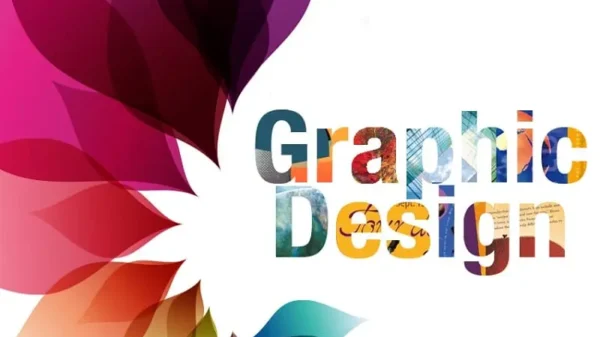Graphic Design: The Creative Edge of White Space in Visual Serenity
Silence Speaks Louder: The Revolutionary Role of White Space in the Evolution of Graphic Design
Key Takeaways:
- White space isn’t wasted space; it’s a strategic tool to direct viewers’ attention to the most important elements of a design.
- Skillful use of white space creates a harmonious balance between visual elements, preventing clutter and improving readability
- White space isn’t just about aesthetics; it influences emotions and perceptions, allowing designers to convey different moods and feelings.
- Minimalistic designs with ample white space exude sophistication and elegance, often making a stronger impact than overly busy layouts.
- Creative designers use white space to break free from traditional grids, experimenting with asymmetry and innovative layouts.
- White space is an essential tool in crafting memorable brand identities, giving a brand a distinctive and recognizable look.
In graphic design, a canvas is not simply an empty area ready to be filled. It is a dynamic interaction of elements beyond what is written or depicted. One of the most effective and frequently undervalued tools at a designer’s discretion is something that, at first sight, may appear counterintuitive: negative space. The vacant areas between images, text, and other design elements, also known as negative space, contribute to a harmonious and effective composition.
White space is about creating an experience that resonates with the viewer, not just leaving voids. In this “Creative Uses of White Space in Graphic Design” investigation, we will examine the artistry and reasoning behind utilizing vacant spaces to captivate and convey. From minimalist aesthetics to breathing digital interfaces, let’s explore how designers use the majesty of silence to communicate messages that are anything but silent.
Examples of Effective Use of White Space
In the intricate tapestry of graphic design, white space arises as a defining element that frequently employs subtlety and restraint to perform its alchemy. Embracing the adage “less is more,” designers have unleashed the potential of negative space to create images with profound resonance and potent communication.
Minimalistic Designs
Minimalism is not simply an aesthetic preference but a design philosophy emphasizing clarity and purposeful simplicity. In an information-saturated world, minimalist layouts are a breath of fresh air. By judiciously employing ample white space, designers can create uncluttered and tranquil compositions, directing the viewer’s attention to what is most important.
Consider Apple’s iconic products’ clear, streamlined, and unadorned packaging. The extensive white space surrounding the product speaks volumes about the brand’s philosophy: elegance and functionality. Beyond aesthetics, a minimalist approach cultivates a visceral connection with the audience, inviting them to engage with the design on a deeper level.
Editorial Layouts
Magazines and newspapers have mastered the art of effectively utilizing negative space. Editorial layouts demonstrate the symbiotic relationship between content and design. The judicious use of white space enhances the legibility of text by providing the eyes with a comfortable amount of space to move across the page.
Imagine opening The New Yorker, a magazine renowned for its complex articles and thought-provoking images. The cadence created by the ample margins, well-spaced columns, and strategically placed images facilitates an immersive reading experience. The negative space guides the reader through the narrative and prevents information excess.
Mobile and Web Interfaces
In the digital sphere, where attention spans are short and user engagement is of the utmost importance, negative space takes on an entirely new meaning. Web and mobile interfaces that embrace white space create a sanctuary of clarity in a sea of pixels. It is the designer’s secret instrument for guiding users through the virtual environment.
Consider the homepage of Google, a model of minimalistic digital design. The expansive white canvas draws attention to the search bar, which has become second nature to billions of users. In a fast-paced online environment, the encompassing white space is the primary functionality and panda sense of serenity.
In addition, mobile applications frequently include white space to enhance the user experience. Whether it’s a weather app’s uncluttered layout or a note-taking app’s user-friendly design, white space is a functional and aesthetically pleasing ally. It enables comfortable interaction, reduces cognitive burden, and facilitates effortless navigation.
By utilizing the power of white space, designers can create environments that transcend the visual and enter the experiential domain. Effective utilization of white space redefines how we perceive and interact with design, from the audacity of minimalist expressions to the elegance of editorial narratives and the seamless interactions in the digital landscape.
Stay with us as we delve deeper into the world of white space, uncovering its profound purpose and illuminating its far-reaching benefits.
The Objectives and Advantages of Including White Space
In the design domain, where every stroke and pixel is deliberate, the strategic use of negative space surfaces is a pillar of aesthetic refinement. White space is a conscious decision that profoundly affects how a design is perceived, understood, and valued.
Visual Stress
At the core of white space is its extraordinary capacity to manipulate visual emphasis with finesse and precision. Like painters, who use negative space to emphasize the subject, designers use white space to direct the viewer’s gaze. Elements can be imparted with significance that transcends their physical presence through meticulous arrangement.
Consider an advertisement for a theatrical performance. By surrounding the event information with ample white space, the eye is naturally drawn to the poster’s central message. White space is a beacon, directing attention to the most important content. In addition, contrast becomes a reliable ally as the interaction between the elements and their surroundings accentuates the design’s inherent drama.
Enhancement of Comprehension
In addition to being a stylistic choice, white space is a cognitive enhancer that facilitates content absorption. Design elements can easily become entangled and overpower the viewer in an information-saturated world. As a visual separator, white space gives the mind a reprieve to process and differentiate.
Consider a sophisticated infographic that simplifies intricate data elements. By strategically integrating white space, each information item is given its own breathing room, allowing the viewer to comprehend the details without becoming overwhelmed. White space functions as a map, navigating the eyes through the narrative’s complexities and fostering a holistic understanding.
Elegant and Sophisticated
In pursuing transcending the ordinary in design, white space arises as the mute architect of elegance and sophistication. The designer’s mastery is demonstrated by their refusal to occupy every square inch of the canvas, recognizing that space is also a potent design element.
Imagine the unwrapping experience of a prestige brand’s packaging revealing a treasure chest. The sparse placement of the logo, surrounded by abundant white space, conveys exclusivity and refinement. The absence of confusion conveys a sense of superior craftsmanship, thereby elevating the product’s perceived value.
The union of negative space and typography is a symphony in and of itself. A minimalist invitation with copious white margins and elegantly positioned type exudes sophistication, inviting recipients to an event that promises elegance from the moment they see the design.
As we venture deeply into white space, it becomes clear that its function transcends aesthetics. It is a conductor of attention, a facilitator of understanding, and a precursor of elegance. It is an eloquent reminder that design is not only about what is present but also what is absent.
In the next segment of our investigation, we will examine the various white space categories and their distinct roles in creating captivating and communicative designs.
White Space Types and Their Applications
White space is not a singular concept in the design domain; rather, it is a versatile instrument that manifests in numerous forms, each with a distinct function and effect. Understanding the various varieties of white space and their applications is essential for designing visually appealing and purposeful layouts.
Micro-White Space
Micro-white space is the delicate interplay between characters and lines that elevates typography as an art form. Every millimeter is significant in terms of letters. Every mio-white space is the conductor of text-heavy designs.
Consider the book’s body text as an example. The minor spacing between letters and words, made possible by micro-white space, is not merely aesthetic; it also serves a purpose. It improves readability by reducing eye strain and inviting the text instead of intimidating it. Micro-white space ensures that every word can breathe, capturing the content’s essence with clarity and elegance.
Large-Scale White Space
While micro-white space is concerned with the complexities of typography, macro-white space is concerned with larger structural elements. This form of negative space is the layout’s architect, prescribing the larger-scale arrangement of elements.
Consider a banner for an art exhibition. The extensive margins surrounding the artwork and accompanying text exemplify macro-white space in action. It defines the overall structure and provides a canvas for each element to flourish while contributing to a unified whole. Additionally, macro-white space provides a vital sense of equilibrium, preventing congestion and lending the design an inviting airiness.
White Active Space
Active white space transcends its role as a background and becomes an integral design component. This form of negative space is incorporated meticulously to shape and communicate the narrative of the design, igniting the audience’s imagination.
Consider a logo in which the negative space conceals a concealed symbol; this is an illustration of active white space. The arrow created by the negative space between the “E” and the “X” in the FedEx logo exemplifies the creative potential of white space. This white space transforms a design into a conversation starter by engaging the viewer’s curiosity, encouraging interpretation, and nurturing a deeper connection.
As we investigate the various manifestations of white space, it becomes clear that each variety is not merely a vacancy waiting to be filled but an artistic opportunity waiting to be exploited. Micro and macro white space, along with the incorporation of active white space, create designs that transcend the two-dimensional and become living, breathing compositions that engage and inspire.
In the following section, we’ll address frequently posed concerns about white space in a design that casts light on its function, advantages, and strategic implementation.
Questions Frequently Asked About White Space in Design
In graphic design, white space is a dynamic instrument that influences how we perceive and interact with visuals. As designers and clients alike strive to unravel the intricacies of white space, let’s address some of the most frequently posed questions about its significance, impact, and strategic integration.
What purpose does negative space serve in graphic design?
It is the breath that lends a design its rhythm and harmony. It plays a crucial role in directing attention, facilitating comprehension, and imbuing elegance, in addition to its aesthetic function. Using white space as a visual guide enhances the clarity and impact of design elements. By intelligently utilizing this negative space, designers can create compositions that communicate clearly and profoundly affect the audience.
What effect does white space have on the user experience?
White space significantly impacts the digital sphere, where user experience (UX) and user interface (UI) reign paramount. White space in digital design functions as an oasis of tranquility amidst the digital din, allowing users to navigate with ease and concentration. By dividing out elements, designers intuitively guide users through interfaces and reduce cognitive burden. White space provides a sense of visual comfort, thereby facilitating smoother and more engaging interactions.
Can vacant space be regarded as an integral element of the design?
White space is an active component of the design composition and not a void. It is not about what is absent but rather what is purposefully present. Designers who work with negative space create a visual experience marked by restraint and purpose. The vacant and occupied space proportions shape the design’s mood, flow, and impact. Thus, white space is more than a backdrop; it contributes to the narrative of the design.
Is it possible to have too much white space?
While negative space is unquestionably influential, balancing it with content is a delicate dance. Too much white space can cause a design to appear disconnected or unfinished, leaving the viewer in quest of substance. Achieving the proper balance ensures that the design remains purposeful and effective. The appropriate quantity of white space enhances, whereas an excess can detract from the message.
How can I effectively convey to clients the importance of negative space?
Clear communication with clients is necessary for navigating the complexities of design options. Describe the rationale behind the incorporation of negative space. Describe how white space improves legibility, directs the reader’s focus, and conveys elegance. Utilize visual examples to illustrate the design impact of this distinction. In addition, emphasize that white space is not wasteful but rather a strategic decision that enhances the overall impact of the design.
As we conclude our investigation into white space, we reveal its function, capacity to transform user experiences, and status as a crucial design element. The voyage through these questions reveals the multifaceted nature of white space and its capacity to enhance the narrative power of design.
In the concluding segment of our investigation, we will review the main findings and the profound impact that creative use of white space can have on graphic design.
In the ever-evolving graphic design canvas, where pixels pulsate with purpose and narratives unravel with each brushstroke, white space emerges as the unsung hero—an artist’s silent symphony conducting emotions and orchestrating meaning. It is the pause between notes in a melody, the pause between lines of lyricism, and the canvas upon which the masterpiece is painted.
As we traversed the white space landscape, we uncovered its secrets, witnessed its enchantment, and embraced its transformative power. From editorial layouts that gracefully guide the eye to minimalist miracles that speak volumes with restraint, white space is not mere vacancy; it is a domain of possibilities that designers navigate deftly to communicate, engage, and captivate.
We’ve discussed how white space is not merely a design choice but a deliberate decision that enhances comprehension and experience. It is a protagonist in the visual narrative due to its ability to direct the viewer’s attention, amplify significance, and stimulate the imagination.
As we leave this exploration with a deeper understanding of micro and macro white space and the allure of active white space, we are reminded that design is a dialogue between the visible and the invisible.
So, the next time you find yourself in awe of an exquisitely restrained poster, a smoothly navigable app, or a magazine layout that speaks volumes through its silence, remember that the strategic dance of white space has cast the enchantment. It is the artist’s invitation to engage, investigate, and decipher.
With white space as our guide, we embark on a visual storytelling voyage that defies boundaries, elicits emotions, and persists in the mind. In the design world, it’s not just about what’s present; it’s also about what’s left out thoughtfully and on purpose.
As we conclude our investigation of white space’s numerous dimensions, we are inspired by its capacity to create harmony from vacancy, beauty from simplicity, and narratives from silence.




































Comment Template